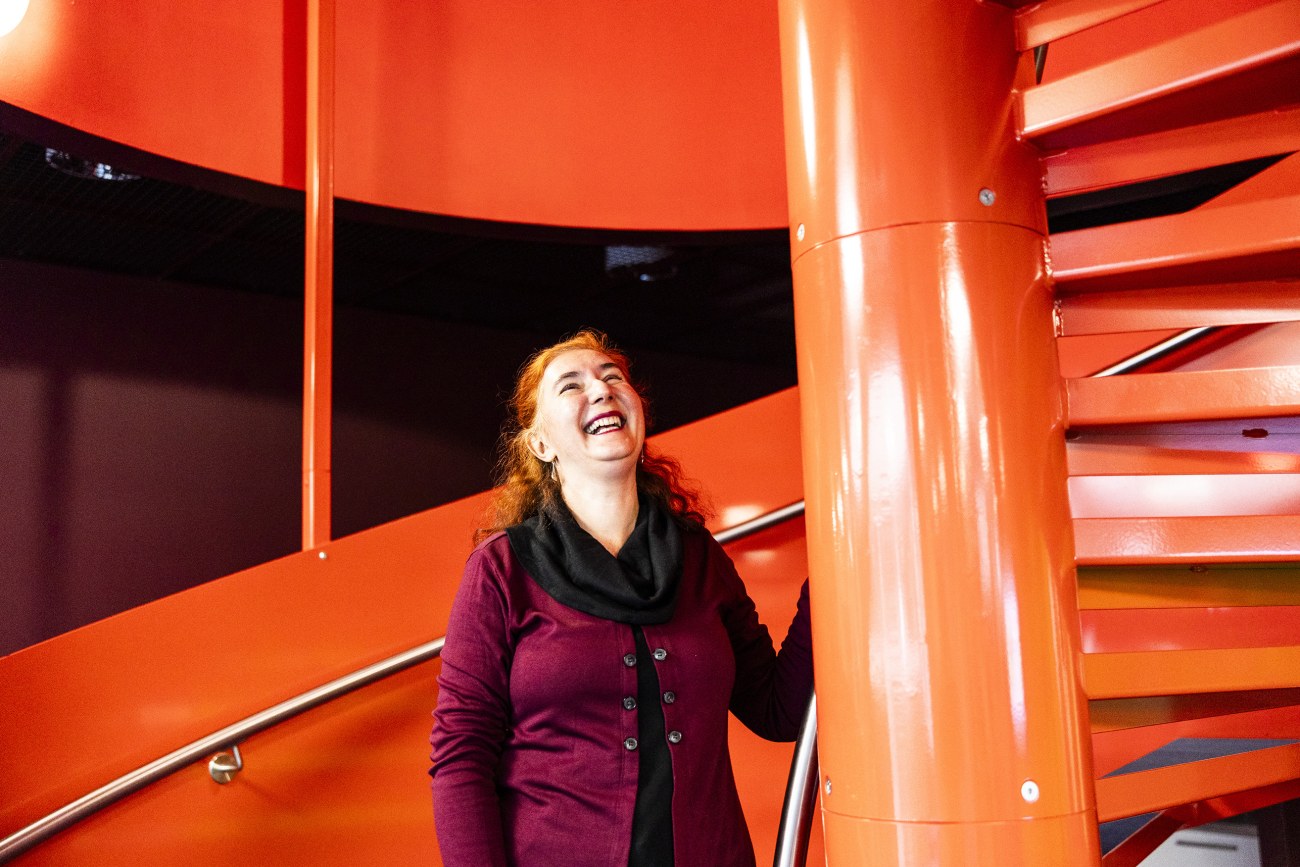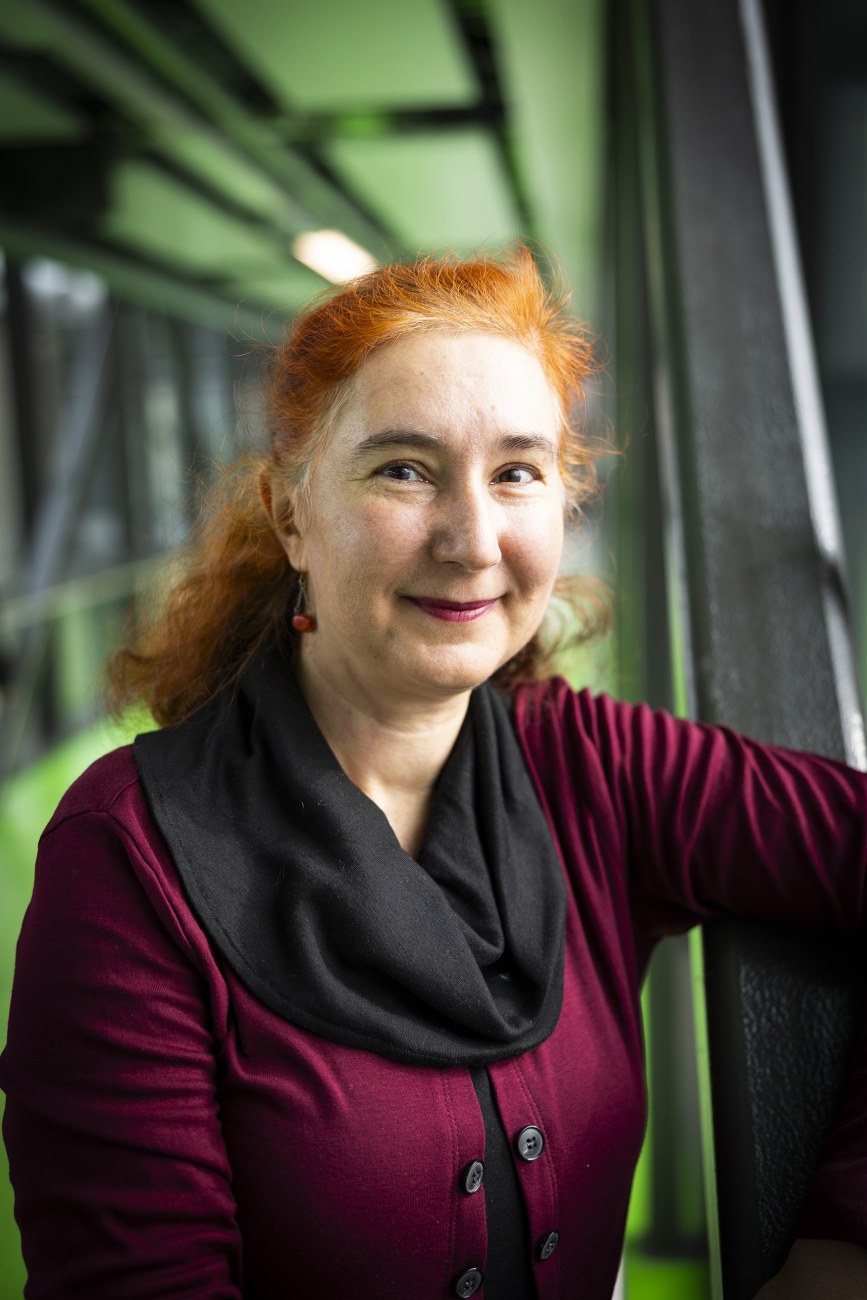In the spotlight: Simona Lohan, Professor of Communications Engineering

Simona Lohan's journey into electrical engineering started in childhood.
– My parents are both engineers; my mother studied mechanical engineering and later professed as a high-school teacher and my father studied electrical engineering and worked in R&D in various industries. As I child, I was building various electrical circuits with the help of my father, such as battery-operating ringing bells or small lightening devices as well as various tractors and machinery with the help of my mother, out of what can be described as Lego precursor blocks; I was also playing with diodes, transistors, leds, thyristors, and other small electronic equipment that my father gathered as a hobby. With the help of my father, we were also developing black and white photos at home, in an improvised laboratory in the bathroom, by mixing various chemicals (developers, fixers,…) and by choosing the right exposure time by trial and error. These were fascinating and opened my curiosity towards how things are built and modeled.
 Photo: Jonne Renvall
Photo: Jonne Renvall– When I had to decide my career path during high-school, I was however oscillating between a literary career (I enjoyed writing child stories as a teenager – unfortunately none of those were preserved) and an engineering career in telecommunications. As the literary career held very little job possibilities afterwards (all these were happening during Ceausescu era), I finally opted for the telecommunications and electrical engineering faculty. The funny and rewarding part is that, in my current career, I have probably more possibilities of writing than if I had chosen a literary path – article writing, reports and deliverable writing, project application writing, sometimes also press releases and scientific blog writing...
Lohan is currently focusing her research on wireless positioning and navigation.
– My main research area and expertise lies within wireless positioning and navigation, i.e., addressing issues such as : where is my device located, how to reach from point A to point B, how to track a drone, how does a plane knows where to land exactly, how an autonomous robot -such as the Sale food delivery robot – knows what path to take and how to avoid obstacles, etc.). These being said, I am also involved in research pertaining to multiple and diverse applications of wireless positioning technology. One example lies within studies about potable water access for everyone – our envisaged solution, in the transnational project LEDSOL with partners from Africa and Europe, relies on a backpack or a head basket carrying a water reservoir where water collected from non-potable sources undergoes a filtering and LED-based purification process and is carried by people to households in need of water; the location engine attached to this portable backpack or head basket is developed in our team, with targets of low power consumption and relying solely on satellite signals, without the need of wireless connectivity which is scarce in some parts of the world.
Another example, based on an EU-funded MSCA project that ended last year (A-WEAR), is how to develop accurate, yet low-cost, indoor, and seamless positioning solutions to use with smart watches and mobile phones; various technologies such as WiFi, Bluetooth Low Energy (BLE), cellular (4G, 5G) or Ultra-Wide Band (UWB) were used for positioning in this A-WEAR project.
A more recent example is the use of positioning-derived information, such as mobility patterns and physical distance between people as metrics for social isolation, and implicitly for loneliness. Simona Lohan is a second supervisor on a CONVERGENCE PhD project dealing with this very issue: “Young People and Future Technology: New Ways to Decrease Social Isolation and to Increase Social Interaction”.
In early 2024, the RESILIENT project, led by Lohan and funded by the Academy of Finland, was launched. In this project, as in the industry-funded ELEVATE project, Lohan and her research teams are developing various algorithms and methods to combat GNSS interference.
– Disturbances and interferences in the frequency bands of Global Navigation Satellite Systems (GNSS) are increasing (As an example, see the news story Agency confirms GPS jamming in Finland at https://yle.fi/a/74-20067383) and finding solutions to mitigate and counteract these interferences is increasingly relevant; in our newly started Aka-NSF project RESILIENT as well as in an industry-funded project, ELEVATE, we are developing various algorithms and methods for combating interferences in GNSS.
 Photo: Jonne Renvall
Photo: Jonne RenvallChallenges and solutions
– Three biggest challenges in my research field are: the device heterogeneity (huge amount of navigation technology available nowadays and the main challenge is how to choose the relevant ones among all existing in such a way that a good tradeoff between performance and complexity is achieved), the increased amount of wireless interferences that deteriorate the system performance, and the energy-efficiency targets that are more and more important, especially at EU level and which translates in our field into the challenge of finding simultaneous low-cost and highly accurate navigation algorithms, says Simona Lohan.
Simona Lohan and her team are developing strategies to overcome these challenges:
– Regarding the device heterogeneity challenge, the traditional data fusion methods are more and more replaced with Artificial Intelligence/Machine Learning (ML)-based solutions. Regarding the interference challenges, we are now investigating Radio Frequency Fingerprinting (RFF) methods, again based on ML, that are capable of differentiating between genuine and attacker/fake transmitters; also collaborative positioning approaches can hold the key towards better dealing with interferences. Regarding the energy-efficiency challenge, some of the methods investigated in our team are based on approximate computing and compressed sensing, e.g., in a running MSCA network, APROPOS network.
About doctoral training
There is a lot of talk these days about doctoral training. Simona Lohan has a lot of experience in this area. And also about the three-year graduation period, which is now the focus of a new doctoral training pilot in Finland
– I was the coordinator of the 4.5 year A-WEAR MSCA network which ended in June 2023 and I am now involved, as scientist in charge, in two on-going MSCA networks at Tampere Univerity, MiFuture (just starting) and APROPOS (ending next Spring). Before A-WEAR, I was also involved in MULTI-POS MSCA network. What we learned in MULTI-POS, that it’s good to know beforehand something about your collaborators before starting a project with them, was a very important lesson that helped us avoiding problems of lack of collaboration in all recent networks.
Last year, for example, a huge number of PhDs came from the A-WEAR project.
– We were very lucky to get very good doctoral candidates in our network as well as very active and committed supervisors. Each fellow had at least two active supervisors from two different universities and many had even 3 or 4 supervisors, which helped in the monitoring and supervisory tasks. The community spirit was also great at all levels: among the coordination team at Tampere University, among all supervisors involved in the project, among all fellows, etc. The graduation time was also pushed by the EU who aims at 3-year graduation process.
Looking to the future
– In my field the current main trends are autonomous vehicles (i.e., self-driving cars and even airplanes) and novel applications based on Low Earth Orbit satellites (such as the SpaceX Starlink, Amazon Kuiper or Eutelsat OneWeb). Location-enabled or geo-tagged e-health solutions are also likely to develop, especially accounting for an EU population growing older and in more need of e-health solutions, Simona Lohan reflects on emerging trends or technologies that will shape the future of e-health.
Artificial Intelligence will play a bigger and bigger role also in our field, as in the whole society. My own research area of wireless positioning is still likely to remain highly relevant as it is the basis of any autonomous robot or drone, who will also grow in numbers.
Simona Lohan
Lohan outlines three pointers for the future of electrical engineering education:
– First of all, AI tools will keep developing to the point that some lectures and books may be completely replaced by AI solutions; as a consequence AI/ML courses might also become a compulsory part of any electrical engineering curriculum; secondly, many societal problems nowadays cannot be solved anymore only through engineering solutions; a blend of social sciences, engineering, and other skills will be needed, thus interdisciplinary programs such as Convergence will probably increase and attract more and more students. Thirdly, the boundaries between various engineering fields may become more flexible and more loosely defined, as future solutions may need to mix various engineering branches, such as electrical, environmental, industrial, bioengineering, etc.
Play and learn
Simona Lohan emphasises the importance of questioning, hard work, curiosity, and diligence for both students and researchers. Collaboration is also crucial.
– In terms of lectures, I aim at making them interactive and to activate the students through various ‘play -and-learn’ activities, by using tools such as Mentimeter, Kahoot, Flinga, Microsoft Forms, etc. or by asking students to act as 'Opponents’ to the work of others and raise themselves questions.
Never stop learning; read as much as you can, not only in your field, but also in related fields and try to always question what you read and think about ways to improve the findings you read about.”
Simona Lohan
– A research career is best suited for people who like to ask many questions: why this happens, how this could be implemented better, what can be changed/improved/tackled differently. In terms of mindset, a growing mindset is better suited to a research career than a fixed mindset, as well as focusing on the solutions instead of focusing on the problems, says Lohan.
 Photo: Jonne Renvall
Photo: Jonne RenvallSimona Lohan
Professor, Communications Engineering
Faculty of Information Technology and Communication Sciences | Electrical Engineering
She is also a Visiting Professor at the Universitat Autonoma de Barcelona in Spain, and a Coordinator of the Marie Curie European Doctorate Network called A-WEAR, which ended 2023.
Lohan is an associate editor in four top journals:
- IEEE Journal of Indoor and Seamless Positioning and Navigation
- Cambridge RIN Journal of Navigation
- IET Radar, Sonar and Navigation journal
- GPS Solutions journals.
Some projects:
- RESILIENT Distributed AI for enhanced security in satellite-aided wireless navigation (RESILIENT). 1.1.2024 – 31.12.2026
- LEAP-RE 2021 EU-AU Research and Innovation call on Renewable Energy, invitation search STN: Puhtaan ja kestävän veden mahdollistaminen älykkään UV/LED-desinfioinnin avulla aurinkoenergiaa hyödyntämällä
- Horizon Europe MSCA ITN- MiFuture , https://mifuture.tsc.uc3m.es/
Author: Riitta Yrjönen





